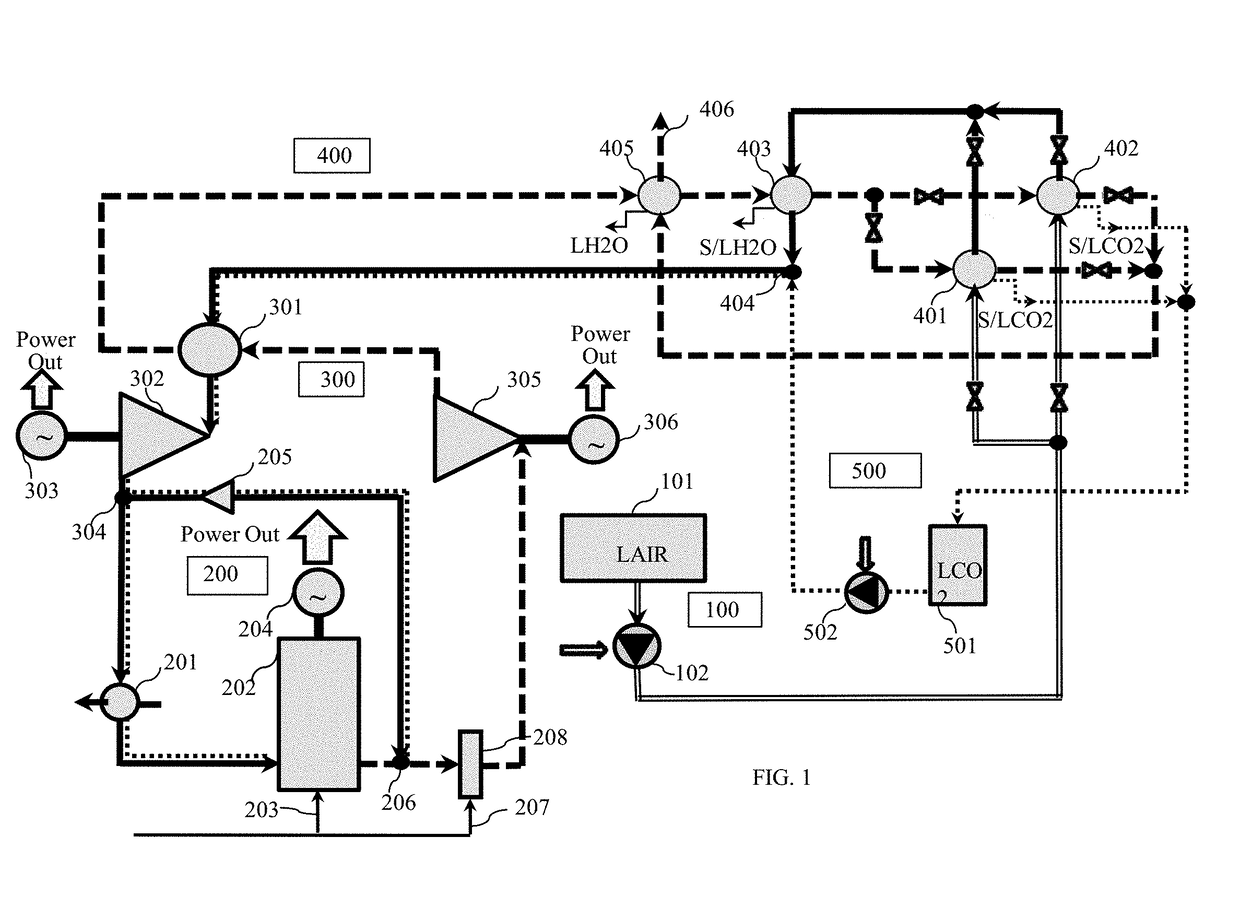Method for Liquid Air Energy Storage with Semi-Closed CO2 Bottoming Cycle
a liquid air energy storage and bottoming cycle technology, applied in the direction of engine fuction, engine working fluid, lighting and heating apparatus, etc., can solve the problems of increasing the charging power and the required volume of the liquid air tank at the laes facility, and producing liquid air during off-peak hours is an energy-intensive process, so as to achieve the effect of increasing the pressure of liquid air
- Summary
- Abstract
- Description
- Claims
- Application Information
AI Technical Summary
Benefits of technology
Problems solved by technology
Method used
Image
Examples
Embodiment Construction
[0020]The practical realization of the invented method for Liquid Air Energy Storage (LAES) with semi-closed CO2 bottoming cycle may be performed through the integration between the liquefier of LAES facility, fueled supercharged reciprocating internal combustion engine (ICE) with associated turbo-expanders package and system for exhaust gas treatment including cryogenic capture of a part of CO2 emissions from facility exhaust with recovery of the captured CO2 emissions in the said bottoming cycle. Such the integration makes possible to maximize power output and round-trip efficiency of the energy storage and to significantly suppress the formation of the thermal NOx emissions. The LAES operation includes the modes of its charge and discharge. The charge operation mode is identical to that described in the published U.S. Patent Application No. 2018 / 0221807 and therefore its detailed explanation is not needed here.
[0021]FIG. 1 shows schematically the first embodiment of the power blo...
PUM
 Login to View More
Login to View More Abstract
Description
Claims
Application Information
 Login to View More
Login to View More - R&D
- Intellectual Property
- Life Sciences
- Materials
- Tech Scout
- Unparalleled Data Quality
- Higher Quality Content
- 60% Fewer Hallucinations
Browse by: Latest US Patents, China's latest patents, Technical Efficacy Thesaurus, Application Domain, Technology Topic, Popular Technical Reports.
© 2025 PatSnap. All rights reserved.Legal|Privacy policy|Modern Slavery Act Transparency Statement|Sitemap|About US| Contact US: help@patsnap.com

